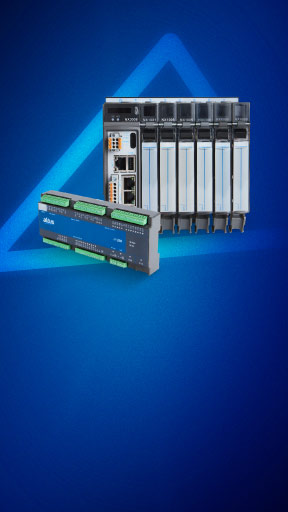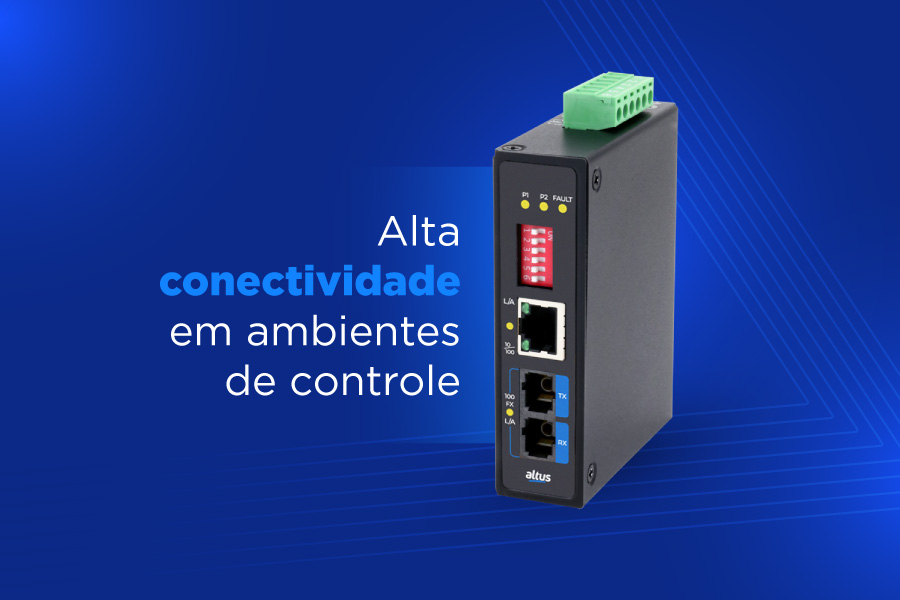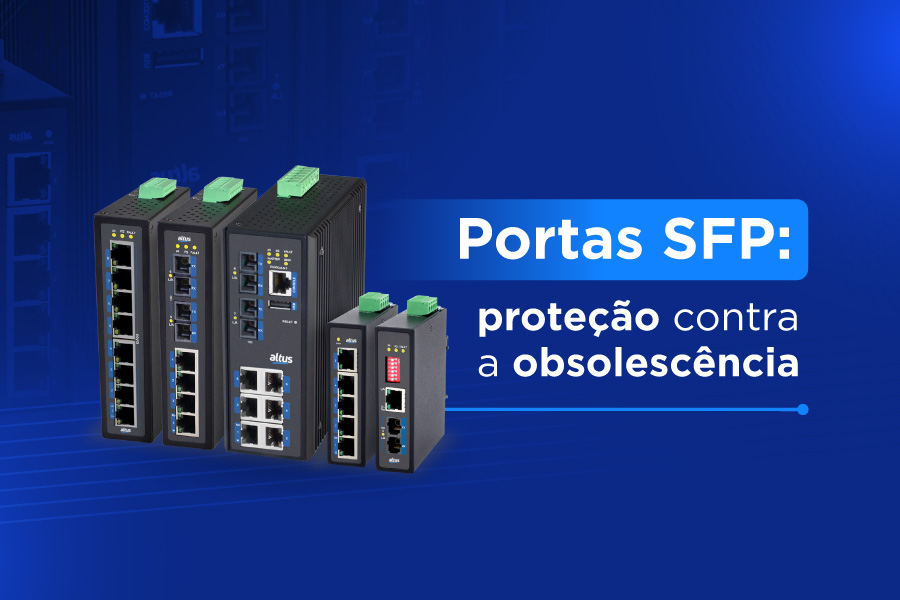Para aplicações críticas, com carga de trabalho 24/7 e que operam a velocidades muito altas, uma falha que implique na parada da planta pode resultar em um considerável prejuízo para a empresa. Como vimos no artigo sobre a importância da redundância em sistemas de automação industrial, diversos segmentos do mercado utilizam arquiteturas redundantes para evitar que a planta de operação deixe de funcionar caso um equipamento fique indisponível.
Com alta tecnologia embarcada, aderente às mais avançadas aplicações da indústria, os controladores programáveis da Série Nexto e as unidades terminais remotas Hadron Xtorm contam com redundância de hardware e software em diferentes níveis. Neste artigo, vamos falar sobre os recursos de redundância disponíveis em duas das mais avançadas séries de produtos da Altus, suas aplicações e principais características.
Redundância de CPUs nas séries Nexto e Hadron Xtorm
Tanto os controladores programáveis Nexto quanto as unidades terminais remotas Hadron Xtorm possuem possibilidade de redundância de CPU. Na família de CLPs mais avançada da Altus, a redundância é configurada através de um modelo denominado Hot Stand-by. De maneira simplificada, um sistema de controle redundante Hot Stand-by conta com duas CPUs, uma primária (ativa), responsável por controlar o sistema em operação, e outra reserva (a qual chamamos de stand-by), que permanece em estado de espera e verifica, rotineiramente, o correto funcionamento da CPU primária.
Caso alguma falha venha a ocorrer e a CPU principal ficar fique indisponível, o equipamento em stand-by assume o controle do processo de maneira automática, sem a necessidade de qualquer ação do operador e sem causar perdas à operação da planta. Essa troca de função entre os equipamentos é conhecida como switch-over.
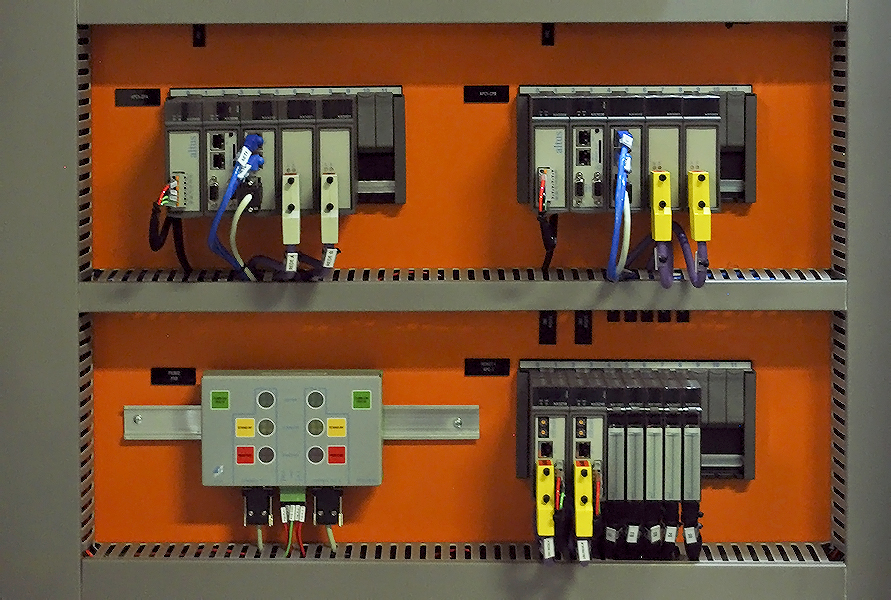
Para utilizar o recurso na Série Nexto é preciso que a arquitetura tenha dois racks completos idênticos (half-cluster), cada um com uma CPU NX3030, modelo com suporte a redundância, e um módulo NX4010, link de redundância. Com duas interfaces de comunicação Ethernet embarcadas, os módulos NX4010 são responsáveis por criar a conexão entre os dois bastidores (ativo e stand-by), manter a CPU secundária atualizada e acionar o procedimento de switch-over.
Para ver mais detalhes sobre a redundância de CPUs nos CLPs Altus, faça o download do Manual de Utilização da Série Nexto.
Já a Série Hadron Xtorm possui uma configuração de redundância diferente da Série Nexto, sendo aplicada no mesmo bastidor. Para isso, basta que as fontes de alimentação e as CPUs HX3040 estejam conectadas lado a lado, pois a conexão dos dados redundantes é feita pelo barramento. Neste modelo, a sincronização ocorre através de uma interface de hardware e software dedicada à esta função dentro das CPUs.
Acionamento de switch-over
Existem alguns tipos de falha comuns em sistemas de automação que podem ocasionar o switch-over entre as CPUs, com as principais sendo:
- Falha de hardware;
- Falha na alimentação;
- Remoção do controlador do rack;
- Falha de comunicação.
O estado da redundância pode ser visualizado no software de programação e através do visor LCD das CPUs, sendo o procedimento de troca acionado através de alguns comandos, como os listados abaixo:
- Recebidos do software de programação ou de um sistema SCADA;
- Gerados pela aplicação do usuário em função de outros diagnósticos, como falha de comunicação Ethernet;
- Botão de diagnóstico presente nas CPUs (Série Hadron Xtorm);
- Painel para controle de redundância PX (Série Nexto), o qual tem a capacidade de desligar completamente um half-cluster caso necessário.
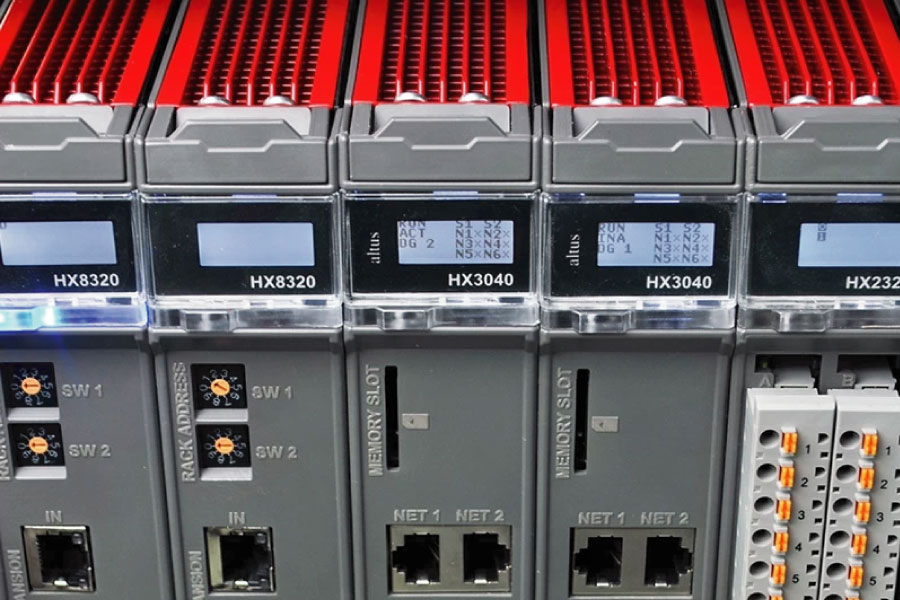
Definição de funções e redundância do canal de sincronismo
As próprias CPUs definem as funções de primária e stand-by de forma autônoma durante a inicialização, não sendo necessária nenhuma ação do usuário. Ambas unidades são carregadas com os mesmos programas e dados do processo, com atualização online de operandos da CPU reserva através dos canais de sincronismo. Estes canais têm por função sincronizar variáveis redundantes, diagnósticos, área de memória de usuário redundante, fila de eventos, sincronização de projetos e comandos.
Faça aqui o download do Manual de Utilização da Série Hadron Xtorm e veja mais detalhes sobre o recurso.
Redundância de redes nos CLPs Nexto
Além das CPUs, a tecnologia dos produtos Nexto também permite a configuração de redundância de redes de campo (PROFIBUS e MODBUS), o que aumenta ainda mais o nível de disponibilidade em arquiteturas de sistemas distribuídos. Esse tipo de recurso permite a operação normal da aplicação mesmo durante uma falha em uma das redes redundantes, oferecendo maior disponibilidade, característica essencial em aplicações críticas.
 No caso de redes PROFIBUS, para utilizar uma arquitetura redundante é necessário que o barramento de cada half-cluster conte com um par de módulos NX5001, mestre PROFIBUS da Série Nexto. Os módulos mestre são, então, conectados, de modo igualmente redundante, com o par de remotas de campo responsáveis por comunicar com os módulos E/S distribuídos – remotas, estas, que podem ser o modelo NX5210, nossa cabeça de rede de campo PROFIBUS-DP redundante.
No caso de redes PROFIBUS, para utilizar uma arquitetura redundante é necessário que o barramento de cada half-cluster conte com um par de módulos NX5001, mestre PROFIBUS da Série Nexto. Os módulos mestre são, então, conectados, de modo igualmente redundante, com o par de remotas de campo responsáveis por comunicar com os módulos E/S distribuídos – remotas, estas, que podem ser o modelo NX5210, nossa cabeça de rede de campo PROFIBUS-DP redundante.
Na redundância de rede, cada dispositivo escravo tem duas conexões de rede ligadas a dois módulos NX5001. Cada par de cabeças redundantes controla um barramento de módulos de E/S da Série Nexto, de forma alternada, sendo uma na rede (ativa) e a outra na reserva, que pode assumir o controle do barramento se houver um defeito na rede ou no hardware da cabeça ativa. Esta troca de controle é automática e transparente ao usuário, mantendo o sistema em operação caso haja falha em uma das redes.
Já a redundância em arquiteturas com rede MODBUS é feita através das CPUs NX3030 e NX3020, modelos da Série Nexto com duas portas interfaces Ethernet. No artigo Configuração de CPU Nexto Redundante com Remotas MODBUS, disponível na Base de Conhecimento, mostramos como construir esse tipo de arquitetura.
Redundância Ethernet com NIC Teaming
Network Interface Card Teaming, ou NIC Teaming é uma estratégia que permite utilizar duas interfaces Ethernet de uma CPU para formar um par redundante e compartilhar os mesmos dados e o mesmo endereço IP. Desta forma, pode-se construir redes Ethernet redundantes com maior facilidade, sem que os clientes conectados a um par NIC Teaming tenham de implementar complexos scripts para chavear endereços IP.
O recurso pode ser utilizado, por exemplo, na comunicação com uma rede de supervisão. Neste caso, as duas interfaces Ethernet que formam o par NIC Teaming se conectam a dois switches diferentes que, em algum ponto, seriam interligados. Esse tipo de arquitetura possibilita uma elevada taxa de disponibilidade para o sistema, sendo fortemente indicada para prevenir falhas nas portas Ethernet, em cabos e em switches.
Diagnósticos avançados
 Como já mencionado, a mudança automática entre CPUs em arquiteturas redundantes é um recurso que aumenta excepcionalmente a disponibilidade e a segurança da aplicação. Porém, essa transição silenciosa pode mascarar algumas falhas (chamadas de “falhas ocultas” – quando existe uma falha e a operação e manutenção desconhece) que, por sua vez, resultam em problemas graves para a operação no futuro.
Como já mencionado, a mudança automática entre CPUs em arquiteturas redundantes é um recurso que aumenta excepcionalmente a disponibilidade e a segurança da aplicação. Porém, essa transição silenciosa pode mascarar algumas falhas (chamadas de “falhas ocultas” – quando existe uma falha e a operação e manutenção desconhece) que, por sua vez, resultam em problemas graves para a operação no futuro.
Para evitar a ocorrência dessas falhas ocultas, os produtos das séries Nexto e Hadron Xtorm contam com uma extensa lista de diagnósticos, como:
- One Touch Diag
- Diagnósticos via LED
- Diagnósticos via WEB
- Diagnósticos via Variáveis
- Diagnósticos via Blocos Funcionais
Estes recursos são capazes de identificar e alertar o operador do processo sobre a ocorrência de falhas na aplicação no momento do switch-over entre os módulos ativos e de reserva, mesmo o processo não tendo sofrido nenhuma descontinuidade ou parada indesejada.
Para mais informações sobre os diagnósticos dos CLPs Nexto, faça o download do manual de utilização das CPUs da família.
Possibilidade de Troca a quente
Tanto os CLPs da Série Nexto quanto as UTRs Hadron Xtorm contam com módulos de E/S com suporte a troca a quente, o que minimiza o tempo de parada do sistema para manutenção, aumentando ainda mais o nível de disponibilidade da aplicação. A funcionalidade, também conhecida como hot-swapping, permite a substituição ou retirada de componentes presentes em um dispositivo eletrônico, no caso, um CLP, sem que haja a necessidade de desligá-lo. Ou seja, esses componentes podem ser manuseados enquanto o controlador continua operando.
Fale com nossos especialistas
Ficou interessado no tema e acredita que esse tipo de recurso possa agregar valor ao seu negócio? Nossos especialistas podem lhe auxiliar a montar uma arquitetura redundante para aumentar a disponibilidade, robustez e a segurança da sua aplicação.
Entre em contato com nossa equipe Comercial através do e-mail vendas@altus.com.br ou dos telefones (11) 2039-1950 e (51) 3589-9514.
